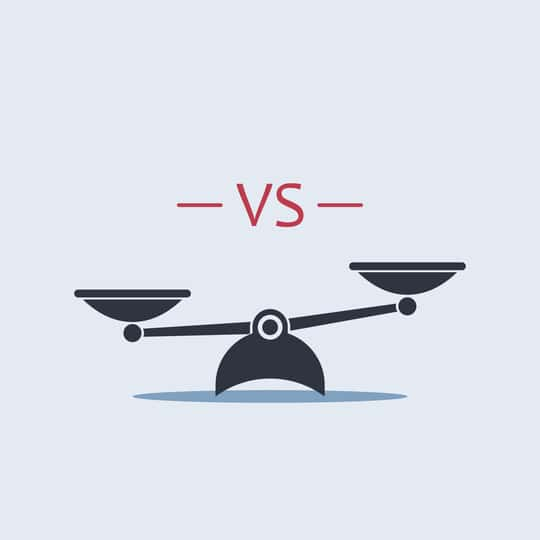The utility sector consists of companies that provide water, electricity, and natural gas services. Despite concerns related to carbon emissions and climate change, increasing investments in renewable power generation capacities, grid modernization, and rising adoption of 5G communications and cloud technologies are expected to drive the growth of the utility market. Of the $1 trillion bipartisan infrastructure bill, $550 billion in new funds is expected to boost the utility industry’s growth in the upcoming years. According to a Reportlinker report, the global utility market is expected to grow at a CAGR of 7.9% by 2026. Therefore, both Brookfield Infrastructure Corporation (BIPC) and NiSource Inc. (NI) should benefit.
BIPC owns and operates regulated natural gas transmission systems in Brazil. The company also engages in regulated gas and electricity distribution operations in the United Kingdom. NI, an energy holding company, operates as a regulated natural gas and electric utility company in the United States. The company operates through two segments: Gas Distribution Operations and Electric Operations.
NI has gained 10.6% over the past month, while BIPC has returned 9.1%. Also, NI’s 13.9% gains over the past three months are significantly higher than BIPC’s 10.5% returns. Moreover, NI is the clear winner with 23.3% gains versus BIPC’s negative returns in terms of the past year’s performance.
But which of these two stocks is a better buy now? Let’s find out.
Latest Developments
On November 3, 2021, Sam Pollock, CEO of BIPC, said, “The successful acquisition of Inter Pipeline marked a significant milestone for Brookfield Infrastructure, and third-quarter results were supported by its initial contribution, as well as strong organic growth within our base business. Looking ahead, we are confident in our ability to capitalize on new investment opportunities of scale across our target sectors and geographies.”
On November 3, 2021, NI President and CEO Joe Hamrock, said, “We continue to expect that our core infrastructure programs and renewable generation investments will drive industry-leading compound annual growth of 7 to 9 percent in diluted net operating earnings per share through 2024, growth driven by our commitments to safety, reliability, customer affordability and sustainability.”
Recent Financial Results
BIPC’s revenues increased 18.6% year-over-year to $414 million for the fiscal third quarter ended September 30, 2021. The company’s adjusted EBITDA grew 18.3% year-over-year to $149 million, while its net income came in at $213 million compared to a loss of $222 million in the prior-year quarter. Also, its EPS came in at $0.72 compared to a loss of $0.12 in the year-ago period.
NI’s operating revenue increased 6.3% year-over-year to $959.40 million for the fiscal third quarter ended September 30, 2021. The company’s comprehensive income came in at $68.40 million compared to a loss of $144.60 million in the prior-year quarter, while its non-GAAP net operating earnings grew 29.8% year-over-year to $47.10 million. Also, its non-GAAP net operating EPS came in at $0.11, up 22.2% year-over-year.
Profitability
NI’s trailing-12-month revenue is 2.94 times what BIPC generates. However, BIPC is more profitable with a gross profit margin and EBITDA margin of 82.54% and 79.93% compare to NI’s 43.72% and 36.51%, respectively.
Furthermore, BIPC’s ROA and ROTC of 6.95% and 20.24% are higher than NI’s 2.84% and 3.96%, respectively.
Valuation
In terms of forward P/CF, NI is currently trading at 13x, 77.6% higher than BIPC’s 7.32x. Moreover, NI’s forward EV/EBITDA ratio of 9.16x is 39.2% higher than BIPC’s 6.58x.
So, BIPC is relatively affordable here.
POWR Ratings
BIPC has an overall rating of B, which equates to a Buy in our proprietary POWR Ratings system. On the other hand, NI has an overall C rating, translating to Neutral. The POWR Ratings are calculated considering 118 different factors, with each factor weighted to an optimal degree.
BIPC has a grade of B for Quality. This is justified given its trailing-12-month ROTC of 20.24%, 409.9% higher than the industry average of 3.97%. On the other hand, NI has a Quality grade of C, consistent with its 3.96% trailing-12-month ROTC, lower than the industry average of 3.97%.
Of the 59 stocks in the Utilities – Domestic industry, BIPC is ranked first. In comparison, NI is ranked fifth.
Beyond what I’ve stated above, we have also rated the stocks for Growth, Value, Momentum, Stability, and Sentiment. Click here to view all the BIPC ratings. Also, get all the NI ratings here.
The Winner
The utilities sector is expected to grow steadily with increasing government investments and rapid digital transformation. While both BIPC and NI are expected to benefit, I believe BIPC is currently the better investment because of its lower valuation and higher profitability.
Our research shows that odds of success increase when one invests in stocks with an Overall Rating of Strong Buy or Buy. View all the other top-rated stocks in the Utilities – Domestic industry here.
Want More Great Investing Ideas?
BIPC shares were trading at $64.02 per share on Thursday afternoon, down $1.38 (-2.11%). Year-to-date, BIPC has declined -6.21%, versus a -1.48% rise in the benchmark S&P 500 index during the same period.
About the Author: Nimesh Jaiswal

Nimesh Jaiswal's fervent interest in analyzing and interpreting financial data led him to a career as a financial analyst and journalist. The importance of financial statements in driving a stock’s price is the key approach that he follows while advising investors in his articles. More...
More Resources for the Stocks in this Article
| Ticker | POWR Rating | Industry Rank | Rank in Industry |
| BIPC | Get Rating | Get Rating | Get Rating |
| NI | Get Rating | Get Rating | Get Rating |






